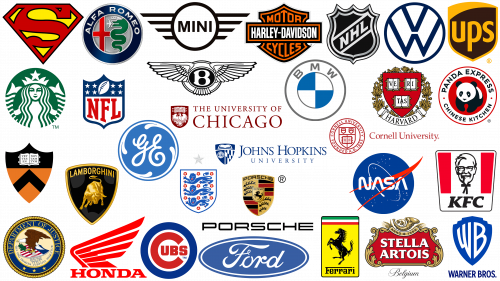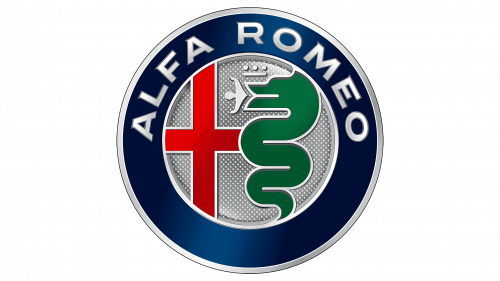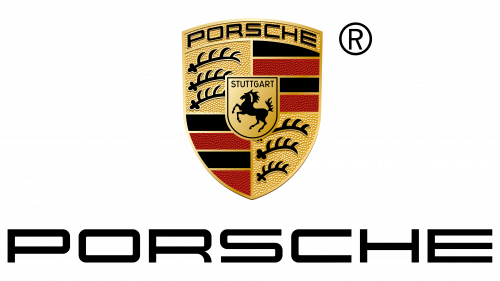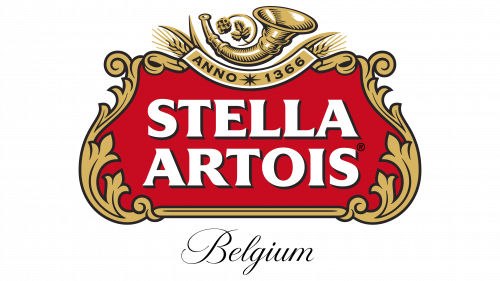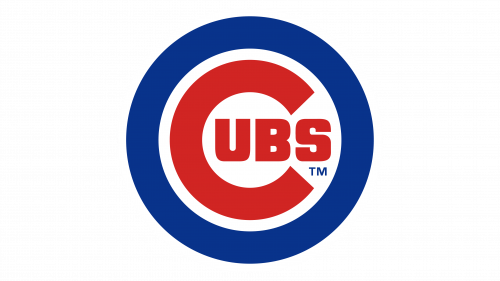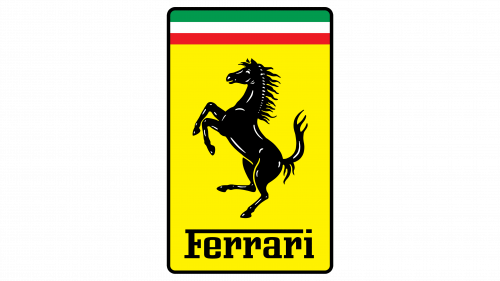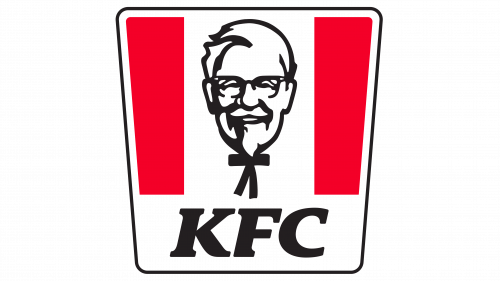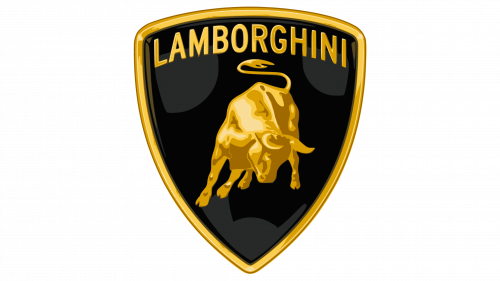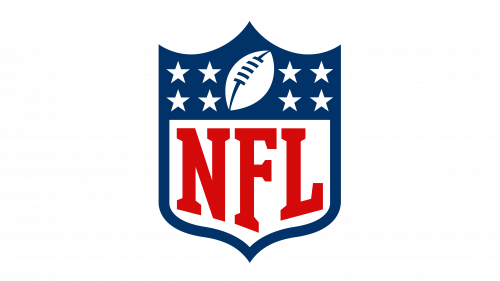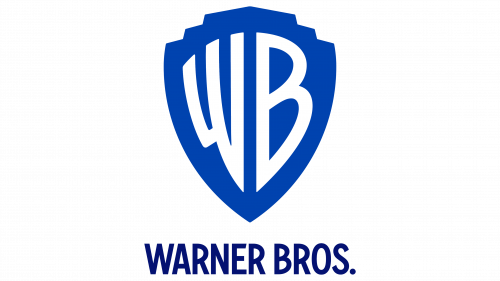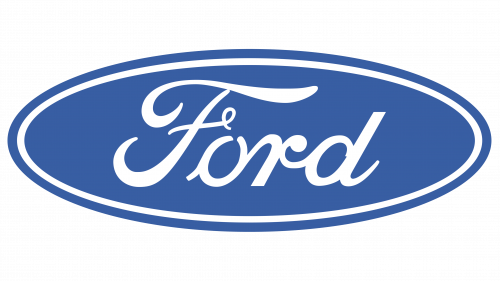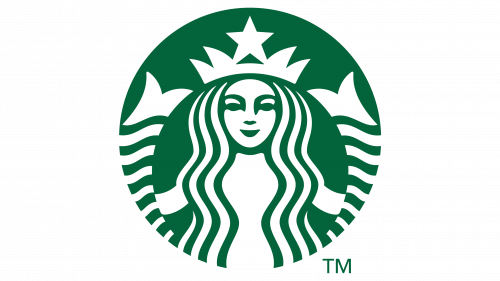Emblematic logos are renowned for entrenching a brand’s identity in the minds of consumers, evoking a myriad of emotions, and fostering a connection. From recognizable symbols such as the Starbucks siren to the iconic Superman logo, these designs often resonate deeply with audiences, evoking feelings of familiarity and trust.
Such logos serve not just as visual identifiers but also as storytellers. They articulate a brand’s ethos, heritage, and values without the need for words. Rather than simply using textual representation or basic descriptive symbols, emblematic designs infuse deeper meanings, weaving tales that engage the audience and cultivate a sense of belonging.
Over the decades, numerous corporations across diverse sectors have successfully harnessed the power of symbolic logos, turning them into symbols of reliability and authenticity. A Closer look will be taken at some prominent emblem-based designs to comprehend the characteristics that set them apart and the reasons behind their widespread acclaim.
Deciphering Logos: What sets them apart?
To begin this enlightening journey, it is necessary to first understand the essence of the concept of “emblem.” An emblem can be thought of as a compact design, including graphic elements and sometimes text, which together represent a brand’s personality. They can be complex or simple, modern or classic, but their main purpose remains the same: to convey the essence of the brand in a concise and visually appealing form.
Emblems used as logos often take the form of shields or coats of arms, being visual markers indicating historical significance. They can also have a circular shape, mimicking the aesthetics of antique seals. The main purpose of using such shapes is to create a sense of prestige and brand significance.
It should also be noted that emblematic logos often perform a double task: they combine elements of modernity and youth with fundamental, time-tested values. Thus, emblems create a bridge between a brand’s history and its current market position, forming a multi-layered connection with the audience.
Emblematic logos typically utilize textual and visual elements, combining them into a cohesive design. However, as a brand evolves, its emblem may transition to a pictorial mark, as happened with the Starbucks logo. Such a transition indicates the growth of the symbolic value of the emblem beyond its original functional purpose.
The nuances of emblem design are not accidental; they are filled with layers of meaning and significance. They are not mere conglomerations of text and images but carefully crafted emblems that evoke a certain emotional response in viewers. In this way, the role of the emblem goes beyond mere brand identification.
Logo examples: Vintage emblem designs
Iconic brand emblems often resonate deeply with audiences due to the rich history, legacy, and elegance they evoke. These symbols, reminiscent of ancient seals and familial badges from previous centuries, infuse a brand’s identity with a sense of continuity and timelessness.
Upon encountering such emblems, there’s an inherent belief that the organization they signify boasts a considerable tenure, having cultivated a vast reservoir of knowledge and skill in its respective sector. This connection to the past often lends an air of authenticity and trustworthiness to the brand in question.
To further appreciate the depth and impact of these symbols, it would be enlightening to explore some prominent examples of these time-honored emblems that have left an indelible mark in their respective industries.
Alfa Romeo
Founded many years ago, Alfa Romeo has become an iconic name in the automotive industry. The brand’s emblem, featuring a snake, is a testament to the company’s rich history. This symbol, which has deep roots, has been an integral part of the brand’s identity since its earliest days, seamlessly blending the past with the present.
While retaining the essence of the original design, the emblem has undergone subtle revisions. These changes have smoothed out the lines and contours of the emblem, ensuring that it is in keeping with modern aesthetics without sacrificing its historical significance.
Alfa Romeo shows respect for its heritage by preserving historical elements in the emblem while adapting it to modern design trends. This perfect blend of history and modernity differentiates the brand from others, setting it apart in the competitive world of automobile manufacturing.
Bentley
With its iconic emblem, Bentley remains the pinnacle of the luxury car industry. Although the emblem has undergone minor changes since its introduction, it has retained its original design elements. Two broad wings extend over a seal-like circle, evoking the prestige usually associated with quality wax seals or authoritative industrial stamps.
The wings on the emblem are more than just an ornament; and they blend seamlessly with the core values Bentley has stood for over the years. Embodying speed, agility, and limitless life experience, these wings serve as a visual statement of unrivaled performance and elegance. These aerodynamic design elements are eye-catching and epitomize what driving a Bentley is all about – luxury combined with mechanical excellence.
On the other hand, the circular core of the emblem serves as a beacon of permanence. This seal-like core represents eternal perfection, evoking an aura of reliability and trustworthiness. It is a permanent symbol reflecting the brand’s unwavering commitment to quality and meticulous craftsmanship in all of its vehicles.
GE (General Electric)
General Electric’s logo is a prime example of a classic design aesthetic that conveys a rich history and timelessness. The company has been around for over 129 years and clearly has a depth of experience that complements its traditional logo.
The symbol exudes sophistication and historical resonance. It evokes the sense of seriousness and authenticity inherent in an antique wax seal affixed to a letter from a bygone era. This visual representation strongly suggests that a company is reputable and deeply rooted in its field, implying expertise that can only be accumulated over years of experience.
Harvard University
Academics have emblems that emphasize their rich past and traditions. Educational institutions, especially those with a long history, use coats of arms, seals, and emblems that symbolize their heritage and the pursuit of knowledge. Harvard University, with its distinctive red shield, occupies a special place in this context.
More than a decorative element, the Harvard University emblem is a passport to the institution’s glorious past, conveying an aura of seriousness and reverence for scholarship. The bright red color of the shield is eye-catching, embodying the university’s passion and commitment to education and research.
The word “Veritas,” which means “truth” in Latin, is inscribed in the emblem. This emphasizes the university’s commitment to the pursuit and dissemination of truth and reinforces the age-old academic tradition of using Latin to convey fundamental principles. This addition enriches the emblem, making it not just a visual marker but a symbol that reflects the university’s core values and ethos.
NHL
The National Hockey League emblem is a combination of old and new, symbolically reflecting the league’s rich history and its movement toward modernity. The configuration of the shield not only emphasizes the significance of the league but also gives it historical significance. This appeal to tradition manifests itself as a lasting connection to the roots of the game.
Subtle modern updates, such as the metallic hue in the silver outlines, bring a dash of contemporary sophistication. These minor changes freshen up the look of the emblem without completely moving away from its iconic elements. Despite these updates, the original features remain unchanged as anchors linking the emblem to its heritage. The combination of past and present elements in the emblem is a testament to the league’s constant evolution.
Porsche
Automotive logos, especially in the luxury and sports car segments, are a treasure trove of iconic emblems that seamlessly blend tradition and modernity. The Porsche emblem is a vivid example of such design skill.
More than just a visual identifier, the Porsche emblem is a narrative canvas that reflects the brand’s rich heritage and roots. Reminiscent of traditional heraldry, the emblem tells the story of the brand’s origins and journey since its inception.
The design of the emblem is an intriguing play of contrasts. While the shield design takes us back to the past, symbolizing a heritage based on tradition, the modern font used for the Porsche word mark brings a touch of contemporary elegance. This fusion of old-world charm and modern designs creates a timeless appeal that sets the brand apart.
Princeton
Founded in 1746, Princeton University is one of the earliest institutions of higher learning in the United States, a recognition it shares with other esteemed Ivy League institutions such as Harvard University. A landmark in the academic world, Princeton has nurtured many leaders, thinkers, and professionals who have made significant contributions to various fields of knowledge and human endeavor.
Princeton’s visual style is a compelling blend of tradition and modernity. Using a shield motif that depicts an open book with a Latin phrase on it, the brand pays homage to the deeply rooted academic principles that have guided the institution for centuries. This invocation of history is by no means modest; it is enlivened with vibrant colors: orange and black. This vibrant color palette gives the logo a dynamic feel, reflecting the institution’s desire to adapt and evolve while respecting its illustrious past. Together, these elements create a corporate identity that is as complex and multifaceted as the institution it represents.
Stella Artois
Stella Artois is a testament to the profound influence of classic emblem design on a global scale. Established in Belgium in 1926, this renowned beer company has embodied its rich history in its emblem using a scroll design reminiscent of the past.
The intricate details surrounding the brand name and the regal combination of red and gold hues give Stella Artois an aura of prestige and elegance. This combination of colors, often associated with luxury and grandeur, enhances the brand’s credibility in the minds of consumers.
The emblem reflects Stella Artois’ commitment to tradition and quality. It shows that despite almost a century of history, the brand remains unchanged in its pursuit of brewing excellence and respect for its origins. Such emblems often evoke nostalgia and trust, hinting at the brand’s long-standing presence and expertise in its field.
The University of Chicago
The University of Chicago is distinguished by its unique and thoughtfully designed logo. The logo uses a traditional shield format but is filled with meaningful symbols that reinforce the university’s identity and values. The iconic phoenix occupies an important place in the shield. In mythology, the phoenix is a bird that is reborn in fire and rises from the ashes. This symbolic figure represents resilience, renewal, and endless possibilities of transformation.
Another element of the logo is an open book, a widespread symbol signifying the pursuit of knowledge. Often found in educational symbolism, the open book conveys the importance of learning, research, and erudition. This element harmonizes well with the phoenix, emphasizing the university’s commitment to creating an environment where ideas survive and thrive, constantly rejuvenated and improved.
UPS
The UPS emblem seamlessly combines traditional design elements with a slightly updated aesthetic. This combination fulfills several functions. The emblematic shape of the shield is not just an aesthetic choice; it fulfills a communicative role. By adopting a shape often associated with protection and reliability, the design is intended to inspire trust and confidence in customers using the company’s shipping services.
The color palette also complements the design idea. The palette uses brown and gold colors, which, in addition to visual appeal, evoke a sense of age-old reliability and a certain restrained luxury. Brown symbolizes reliability and straightforwardness – the most important values in logistics and delivery. Gold, on the other hand, symbolizes the standard of excellence and superior quality.
The UPS logo strikes a balance: it looks somewhat modern while incorporating time-honored design elements that speak to stability and quality.
Brands with emblems: The modern logo
Many logo emblems that have gained recognition over the years carry a sense of nostalgia reminiscent of more traditional design styles. As the business world evolves, companies have a noticeable desire to rejuvenate and add a touch of modernity to their visual brand identity. Regularly, companies with emblematic logos are finding that changes are needed. Whether it’s using new color schemes or streamlining design elements, these changes serve a clear purpose: to broaden the brand’s appeal and resonate with a wider range of consumers.
In a world where design aesthetics are rapidly changing, brands are constantly on the move, striving to find a balance between maintaining a familiar logo and incorporating modern elements. While some emblems have undergone significant changes, others have opted for more subtle tweaks that demonstrate the art of combining time-honored design elements with modern aesthetics.
BMW
Familiarity with the history of famous automobile brands allows us to trace the fascinating path of logo evolution, often moving from traditional symbols to more rational images. The BMW emblem serves as a vivid illustration of this trend.
Today’s version of the BMW logo may lean toward modern minimalism, but its effectiveness as a brand marker remains unchanged. There are subtle hints of its historical past in the logo design. The flag element is a tribute to the brand’s heritage, while the company name provides immediate recognition.
Brands such as BMW skillfully combine past and present in their emblems, ensuring continuity and relevance in a rapidly changing marketplace.
Chicago Cubs
Delve into the world of baseball, and one emblem that may catch your eye is the Chicago Cubs team emblem. Its design, characterized by bright colors and eye-catching elements, makes a lasting impression, providing instant recognition on caps, jerseys, key chains, or posters.
The modern aesthetic of the Chicago Cubs emblem does not overshadow its historical roots. There are nuances in its modern look that are reminiscent of traditional emblems. It’s this subtle blend of old and new that makes it so appealing. The emblem serves as a bridge that connects the team’s glorious past to its vibrant present.
Such emblems become more than just a design; and they become symbols of pride. They give fans a tangible connection to the team’s path, its ups and downs, and future aspirations.
Ferrari
The Ferrari logo is a testament to the brand’s rich heritage, seamlessly combining traditional design elements with modern adaptations. At the center of the logo is the iconic horse, a symbol deeply intertwined with the brand’s heritage. This majestic creature pays tribute to the historical past of the company and demonstrates the energy and dynamism for which Ferrari is famous. The bright colors of the emblem reflect the cultural nuances of the region where the brand was born.
This iconic emblem has undergone changes to demonstrate Ferrari’s commitment to innovation while respecting tradition. Notable changes have been made to the geometry of the emblem. If in earlier versions of the emblem had an outline resembling a shield, then in modern versions, it has become more rectangular.
Harley Davidson
Harley Davidson is a bright beacon in the world of automotive branding. The emblem, synonymous with freedom and rebellion, has firmly entered the global consciousness, becoming more than just a symbol of a motorcycle brand.
The most important aspect of Harley Davidson’s success lies in the skillful use of the emblem, not only as a logo. It represents a distinct identity.
Harley Davidson skillfully combines global brand consistency with local adaptation. This reinforces the idea that while the brand has a broad global presence, it also values the nuances of local cultures and communities. This dual approach has strengthened Harley-Davidson’s image and allowed it to remain in the annals of automotive history.
KFC
The KFC emblem combines the iconic image of the company’s founder with a clear message; the design reflects the essence of modern branding, combining simplicity and memorable elements. The emblem hints at the company’s legendary past, as seen in the image of Colonel Sanders.
Of course, not every design will resonate with everyone, but the current KFC logo does the job, cementing the brand’s identity in the competitive fast food market. It combines sophistication and accessibility to ensure it appeals to a wide audience. There is a sense of nostalgia in the design, but at the same time, it reflects modern ideas of branding, which makes it special.
The KFC logo is a great example of how brands can adapt and evolve, keeping up with the times and paying homage to their roots.
Lamborghini
The Lamborghini emblem is a beacon of the evolution of design excellence in automotive branding. This iconic symbol has transformed over the years yet has remained deeply rooted in the principles of symbolic design. The shield motif, prevalent in the brand’s emblematic marks, lays a foundation that testifies to tradition and reliability.
Embedded in this shield is the company name in a modern font. This addition balances the recognition of the brand’s historical past with its forward-looking aspirations. The shining golden bull on the emblem is not just eye-catching, it embodies the Lamborghini ethos. It symbolizes power, unwavering determination, resilience, and unwavering quality.
NASA
Government agencies and official organizations understand the importance of a strong visual representation. The NASA logo is an example of how emblematic design can enhance the perception of an official institution. Although the aesthetics of the NASA emblem show modern trends, it does not abandon the classic principles of emblematic design.
This logo skillfully blends modern design elements with time-honored emblem features. The circular outline, which is one of the main elements of the emblem, encompasses the organization’s name, giving it authenticity and authority. The celestial graphics are interspersed with textual elements indicative of the agency’s space exploration activities. These images don’t just illustrate; and they convey the vastness of space and the limitless possibilities of space exploration.
NFL
Sports organizations around the world recognize the importance of symbolic branding. The NFL takes its rightful place in this realm with its emblem, which is synonymous with the spirit and greatness of American soccer. This emblem represents the nation’s love for the game, combining the heritage, honor, and passion that has driven American soccer for decades.
The intricate design of the NFL shield creates a sense of strength and continuity, signaling the league’s unwavering commitment to the sport. The vibrant hues used in the emblem give it a modern appeal, ensuring its relevance against the backdrop of dynamic branding elements. This combination of traditional and modern design elements allows the emblem to resonate with both old fans who honor the roots of the game and new fans who are attracted to its modern charisma.
Panda Express
This logo is built on a classic round base, showcasing the brand’s mascot and giving it a distinct personality. Based on this wide palette, the Panda Express logo is an example of symbolic design.
Around the mascot is the name of the company, typed in a font that is catchy and attractive. This choice of font not only emphasizes the cultural roots of the brand but also creates a sense of uniqueness and authenticity. A symbolic approach to design helps to reinforce the perception of brand integrity.
Warner Bros
The Warner Bros. emblem is a classic example of how a brand logo can adapt and evolve without losing its originality. Since 1923, the emblem has undergone many changes but has always retained its signature shield design, remaining unchanged throughout decades of movie history.
Over time, incremental changes have been made to the emblem to meet the demands and tastes of successive generations. The current version features bold typography and bright hues – a deliberate design choice aimed at appealing to a younger audience.
The brand’s flexible approach to keeping up with market trends without compromising its fundamental identity is evident in these changes. Each new Warner Bros. design demonstrates how a logo can be both a nod to the past and a passageway to the future. The unchanging shield remains a unifying motif, while contemporary elements expand the brand’s reach to different audiences, ensuring that Warner Bros. remains an easily recognizable and respected name in the entertainment industry.
Famous brand emblems: Other popular logos
Companies globally have embraced the use of emblems in their branding. There’s a high chance that at this very moment, a notable emblematic logo comes to mind and, with it, evokes a distinct emotion or perception. These emblems can influence our perceptions and elicit many reactions, shaping our overall impression of a company.
To spark some creativity, here are some renowned emblematic logos from top-tier companies to consider when crafting a unique logo for a venture:
Cornell
Emblem-style logos hold a special place in the branding world, especially for institutions with a rich history. The Cornell University emblem is a prime example of this. This logo effectively reflects the university’s heritage and credibility by utilizing traditional motifs and symbols.
At the heart of the emblem is the shield, a universal symbol of defense and courage. In the context of academic emblems, the shield symbolizes the protection of knowledge and values passed from generation to generation. Cornell University’s choice of this design element demonstrates its strong commitment to its founding principles and vision for the future.
The inclusion of the university’s founding date provides a chronological reference, emphasizing the enduring legacy of higher education. This detail emphasizes the continuity and stability that the university has maintained over the years as a beacon of academic excellence.
Ford
The Ford emblem is a testament to the power of simplicity in design. In the automotive industry, many logos favor complex designs, multiple colors, and detailed images. The Ford emblem is different in that it has no embellishments and focuses on the brand name.
While it may seem simple at first glance, there is a depth to its design. The font used for the brand name pays homage to the personal character of the company’s founder. The emblem embodies the essence of Henry Ford’s vision and his core values. By utilizing his signature style, the brand subtly conveys the reliability, heritage, and humanity behind the huge enterprise.
In this day and age, where many brands focus on complex graphics and symbols, Ford’s decision to settle on a classic name-centric logo emphasizes the brand’s confidence in its heritage.
Honda
The Honda motorcycle emblem is the distinctive mark that distinguishes the company’s two-wheeled motorcycles from their four-wheeled counterparts. Drawing inspiration from the wing of the Greek goddess Nike, the emblem symbolizes victory, speed, and agility. Such attributes, as best as possible, correspond to the essence of motorcycles – the excitement of speed and skilled maneuvering.
Albeit indirectly, the emblem’s association with Nike creates a subconscious connection to triumph and excellence. Although the emblem is found predominantly on Honda motorcycles, the branding materials focus more on its visualization.
The choice of fender also evokes a sense of freedom and fluidity – characteristics often associated with riding a motorcycle. By incorporating such powerful symbolism into the motorcycle emblem, Honda effectively captures the essence of its two-wheeled vehicles: a combination of power, grace, and unbridled freedom.
Johns Hopkins University
Emblem-style logos are often favored for academic branding, as they convey a sense of heritage and authority of the institution. Among such examples, the Johns Hopkins University logo is particularly notable. With over a century of history, this esteemed educational institution has skillfully modernized its shield-inspired emblem with a contemporary aesthetic.
The design of the emblem serves several purposes. First, it reflects the rich history of the university, inspiring trust and respect. Second, it allows the university to remain relevant in a contemporary context by adapting the classic shield design to modern visual preferences. This delicate balance between tradition and modernity enhances the brand’s presence and reputation. The symbolic logo, often designed in official colors, creates a unified and easily recognizable identity for the university.
Mini
The constant evolution of branding elements is evident in the automotive industry as well, given the need to capture and maintain consumer interest. A great example of such a dynamically evolving emblem is the Mini Cooper emblem. This emblem has undergone many changes to remain appealing and relevant to its target market.
The emblem goes beyond simply depicting the front of the car. It has been designed with an original wing-like design, which adds to the meaningfulness of the overall picture. Concepts such as maneuverability, speed, and a sense of boundless freedom emerge, which is akin to the universally recognized attributes often attributed to automobiles.
The Mini Cooper emblem masterfully combines modern aesthetics and hidden ideas aimed at rational and emotional resonance with the target audience.
Starbucks
The journey of emblems through time is a fascinating and revealing process. If we take Starbucks as an example, its logo has undergone a significant evolution from older, more traditional images to its modern incarnation. Over the years, a conscious decision was made to simplify the logo, making it cleaner and more minimalistic.
In doing so, the move to a simplified design does not mean losing the essence of the emblem and its historical significance. On the contrary, the modern design eloquently reflects the brand’s heritage. The current Starbucks emblem is a testament to its adaptability while honoring its roots, effectively connecting the past to the present.
Superman
Emblems, while often bearing the name of the organization they represent, do not always require text to convey their message. Some symbols, through constant exposure and cultural influence, become universally recognized. The Superman emblem is a prime example of this phenomenon. The symbol, imprinted into the collective consciousness, is synonymous with courage, resilience, and bravery.
Over time, the power of the emblem is often enhanced by its constant appearance in various media, association with memorable storylines, and representation of universally recognized traits. The Superman emblem, depicting a bold “S” in a shield, has firmly established its place in popular culture. The emblem’s bright colors and original design make it easily recognizable across languages and cultures. The success of the emblem is also due to the values it represents. Even without being directly linked to the superhero of the same name, it embodies ideals that resonate with people around the world.
The Department of Justice
Government agencies often choose emblematic logos to convey a sense of seriousness and officialism. The seal of the Ministry of Justice is a prime example of this approach. Its intricate design conveys a deep sense of authority and reliability, which is essential for an institution that oversees legal matters.
Detailed and complex emblems embody the long-standing traditions and importance of the agencies they represent. If, for government agencies, such emblems are quite appropriate, then in the commercial sphere, they may seem overly intricate.
Businesses, as a rule, prefer more rational logos that can be easily repeated on various platforms and marketing materials.
Three Lions (England national team)
In UK sports, the emblem featuring three lions is an iconic representation rooted deeply in England’s heraldic history. The symbol remains relevant and treasured, symbolizing heritage and passion among football fans.
The emblem’s timeless nature and its roots in English history have cemented its place in the hearts of countless fans. Its enduring appeal has made it an emblem of pride for football lovers and influenced the design choices of various other sports entities within the nation.
The three lions motif, a powerful and enduring symbol, is a testament to how historical elements can be seamlessly integrated into modern design to create a lasting impact. While representing a nation’s pride on the sports field, the emblem also subtly narrates a tale of rich traditions and the evolution of a country’s identity over centuries.
Volkswagen
The Volkswagen emblem is an iconic symbol in automotive branding. Often cited as one of the brand’s best symbols, it seamlessly blends modern design with the company’s rich heritage. The emblem does not stray from its historical roots, but at the same time, its latest modifications show a modern focus.
Over the years, the emblem has undergone many changes. The purpose of these changes was to adapt to changing market preferences and aesthetic trends, as well as to maintain brand recognition and relevance. This careful balance between old and new allows the logo to remain fresh yet familiar.
The VW emblem is a perfect example of how brands can evolve visually while remaining true to their core values and heritage.
The impact of famous logos
In today’s dynamic business environment, the choice of a company’s logo plays a pivotal role in shaping its public image. The type of logo a brand chooses can speak volumes, offering insights into the company’s core values, vision, and identity.
Opting for a symbolic logo is a choice that many brand custodians make when they aim to exude a sense of gravitas, legacy, or distinction. Such logos are not just about appearances; they encapsulate the essence of a company’s journey, its origins, and its inherent narrative. Emblems are adept at weaving together text and graphics, presenting a holistic narrative concisely yet profoundly.
Historically, emblems have favored myriad businesses, from age-old establishments aiming to underscore their storied pasts to contemporary entities keen on crafting a rich narrative. Their inherent versatility allows for a fusion of the old and the new, making them a timeless logo option.
While emblems offer many advantages, designing one requires finesse and expertise. Their intricate nature demands a delicate balance to ensure clarity without compromising on the depth of the message. Overloading an emblem with excessive detail can lead to confusion, diluting the brand’s message.
Engaging an experienced logo designer is paramount when considering a symbolic logo. Such professionals possess the acumen to strike the right balance, ensuring that the emblem mirrors the brand’s ethos while maintaining aesthetic and communicative integrity. A well-crafted emblem enhances brand recognition and fortifies its reputation in the marketplace.
